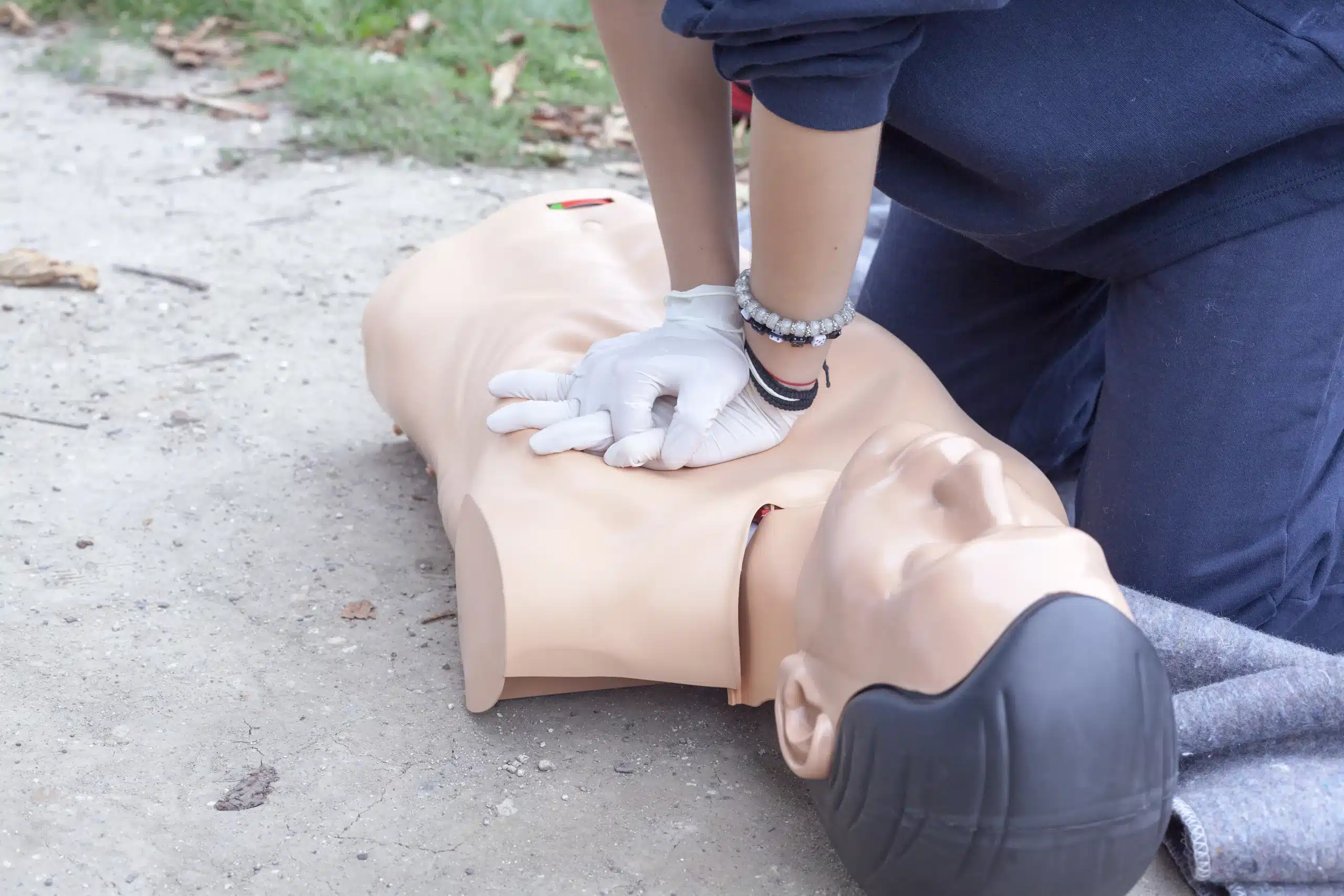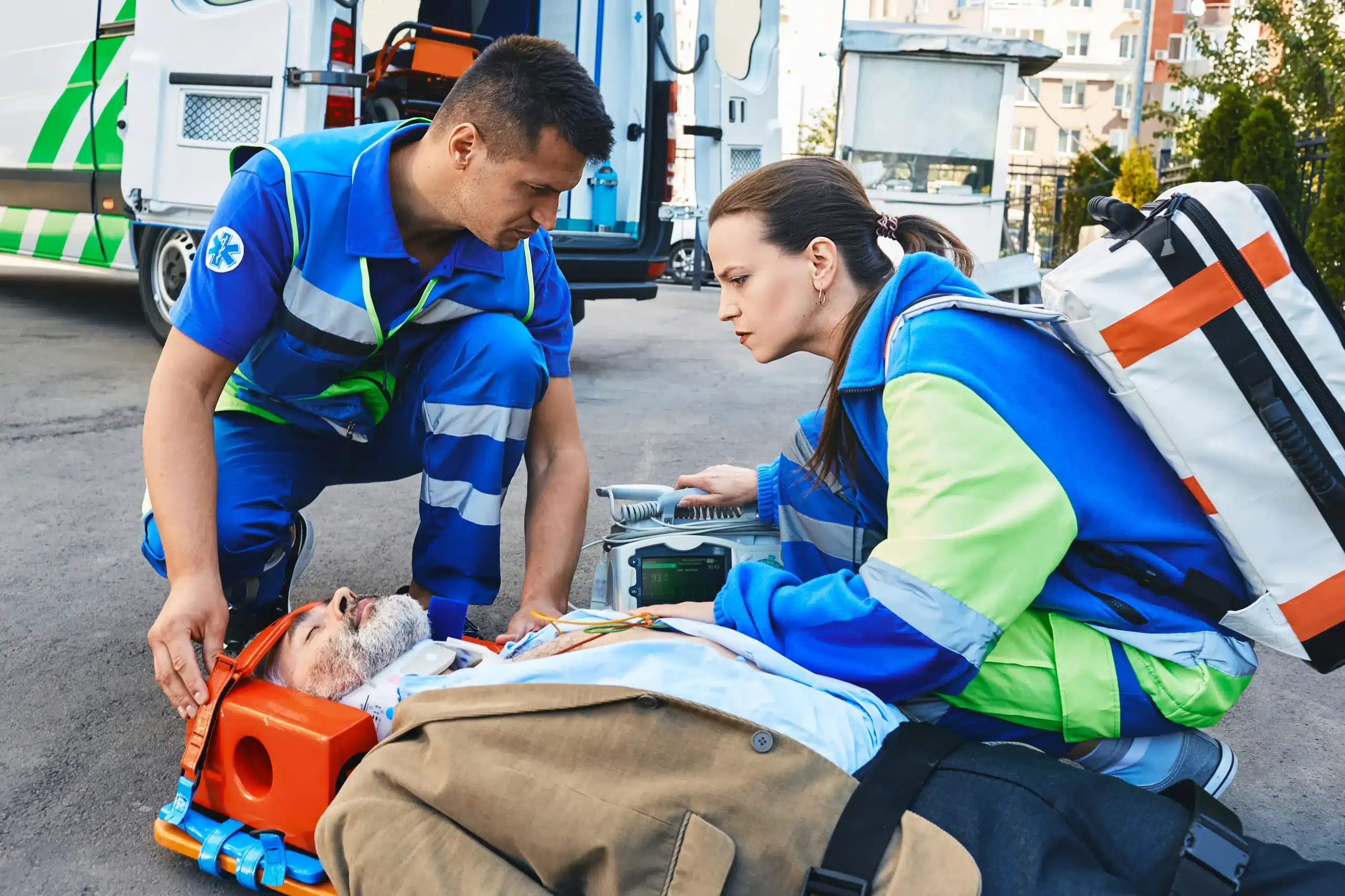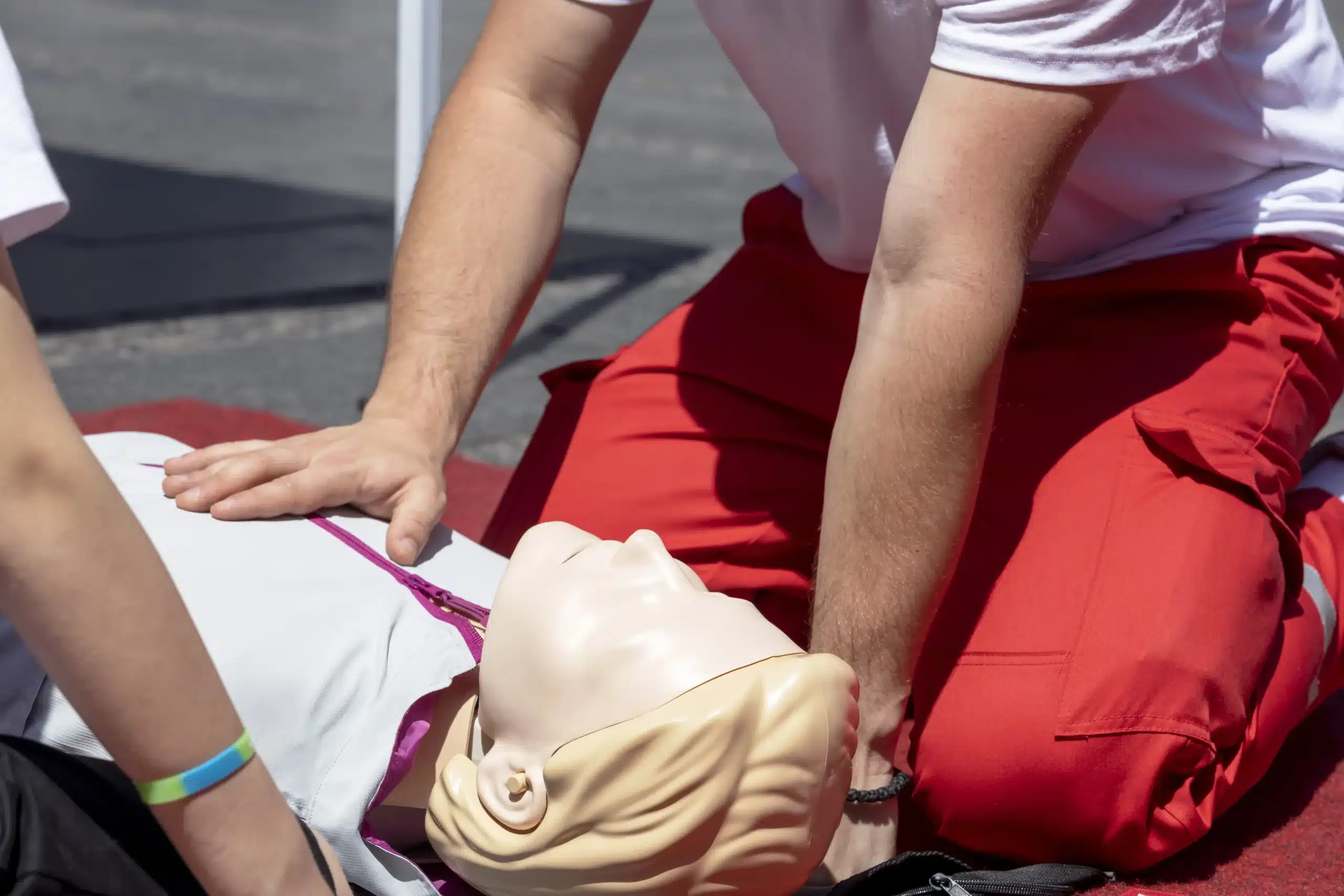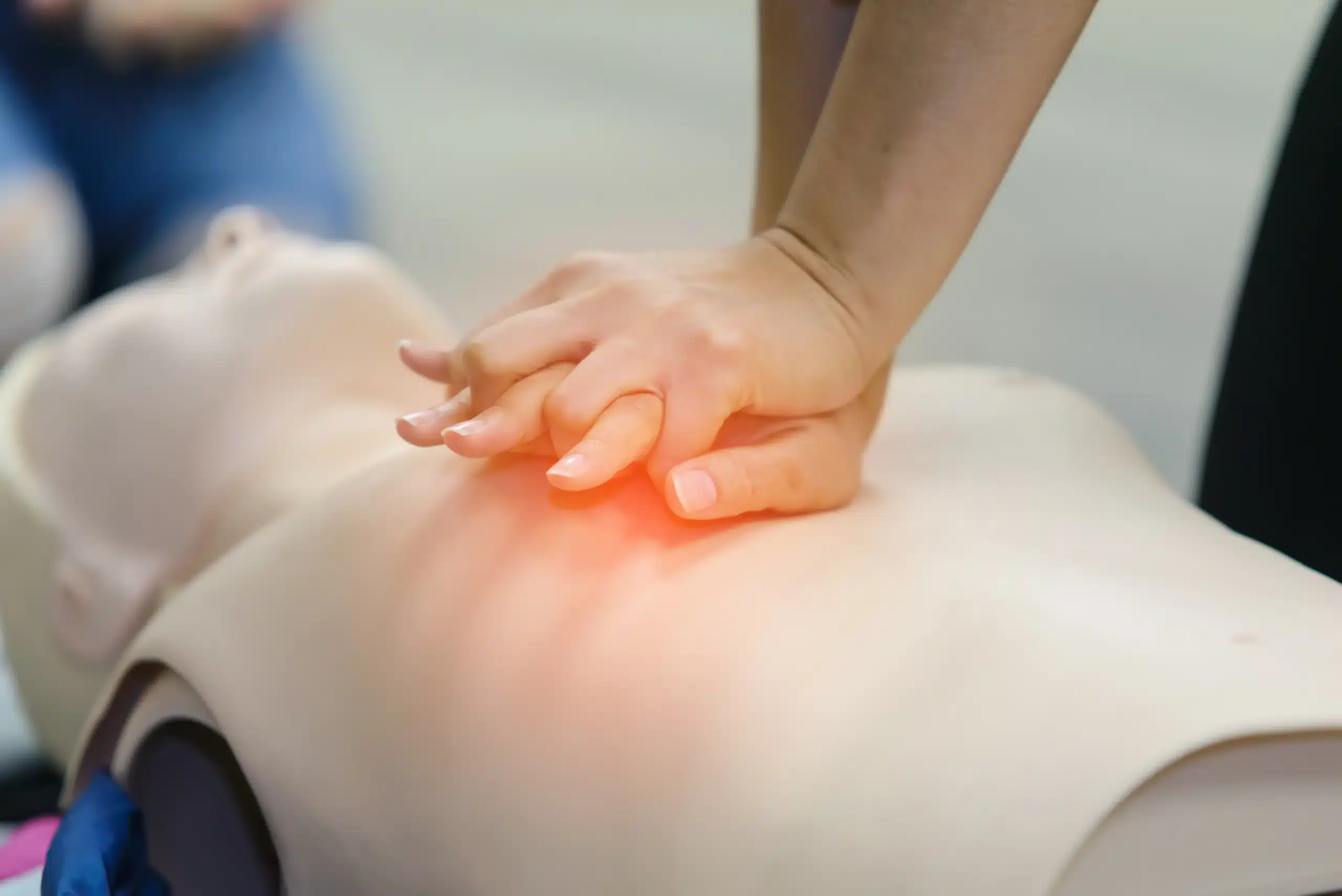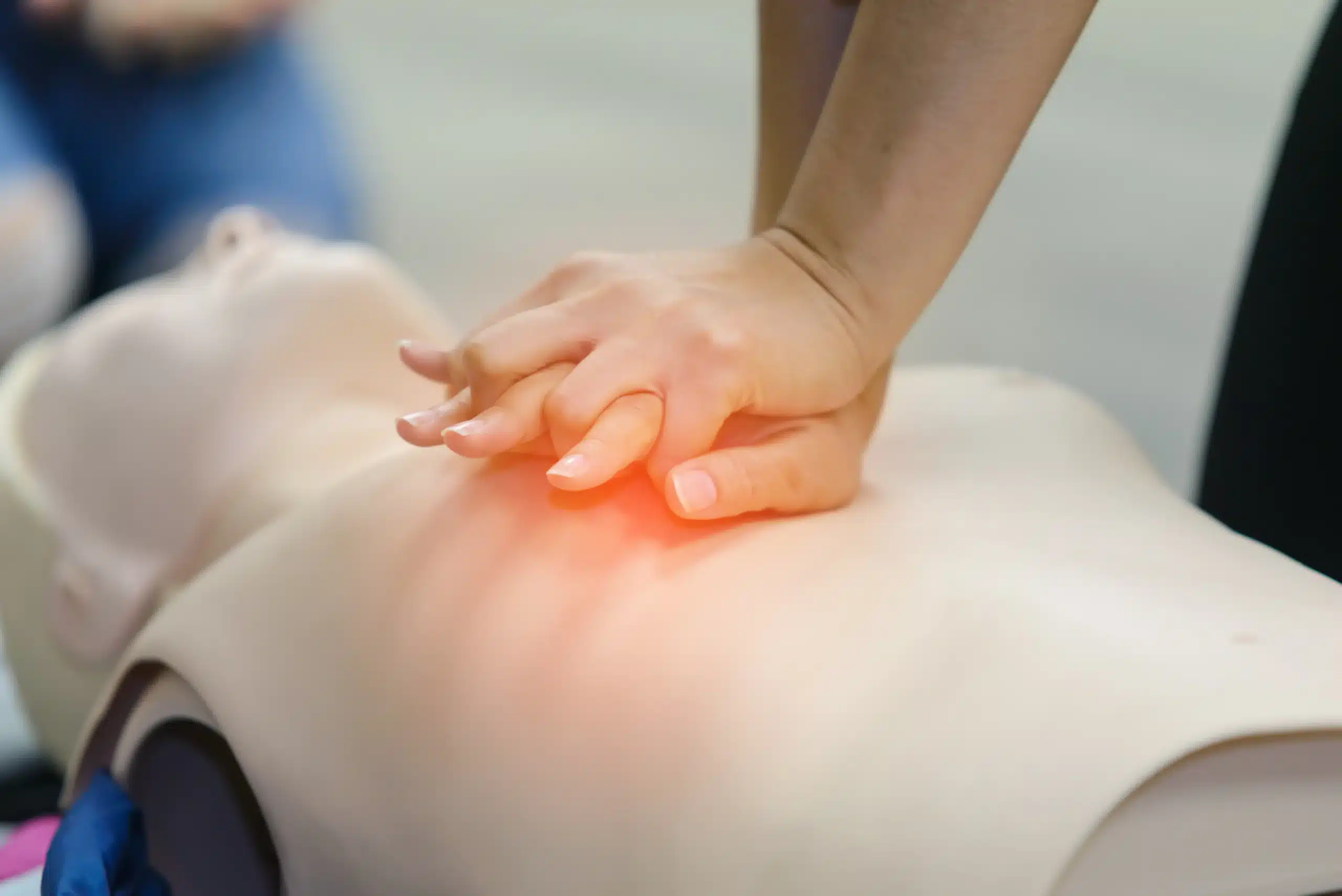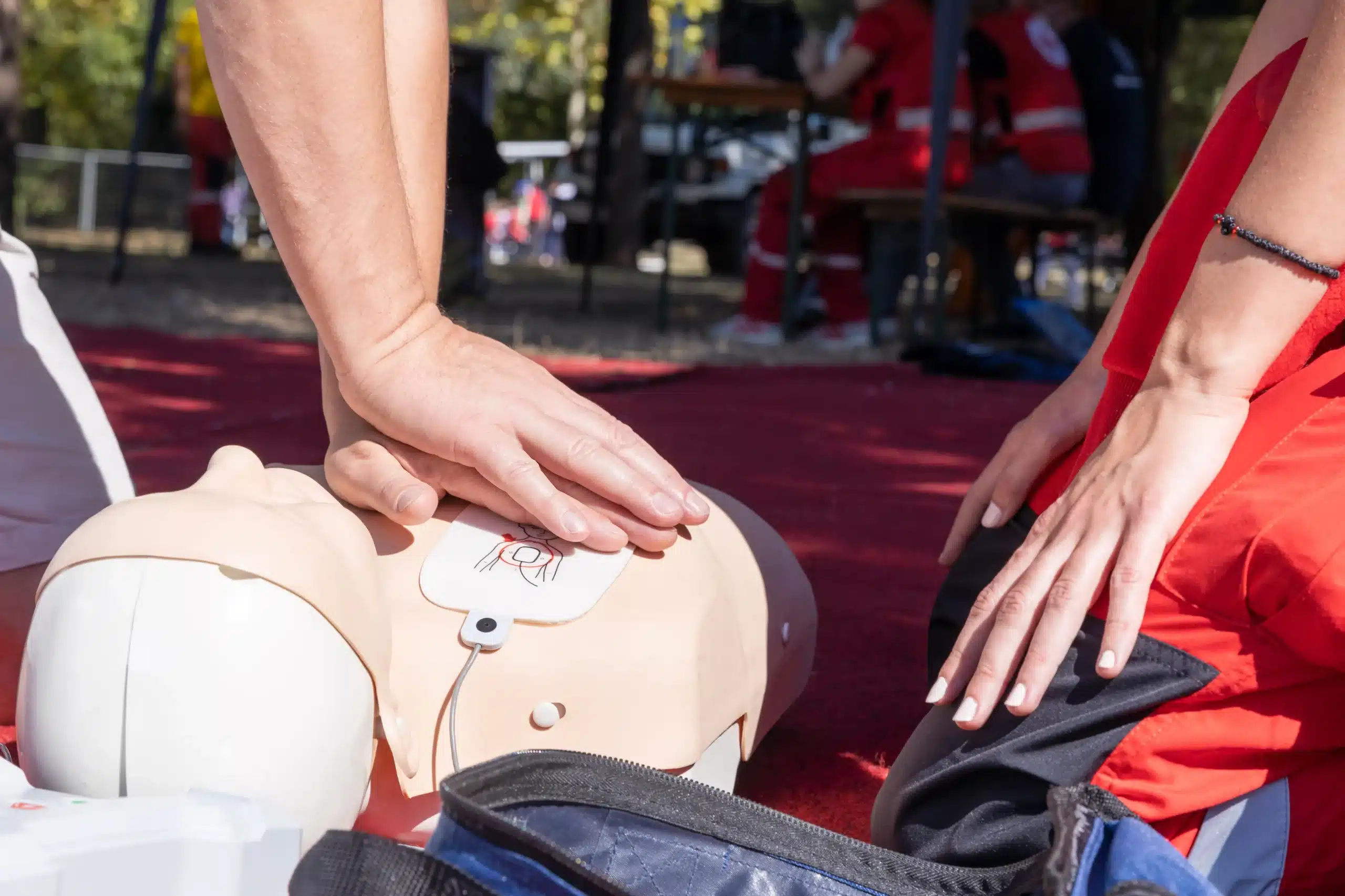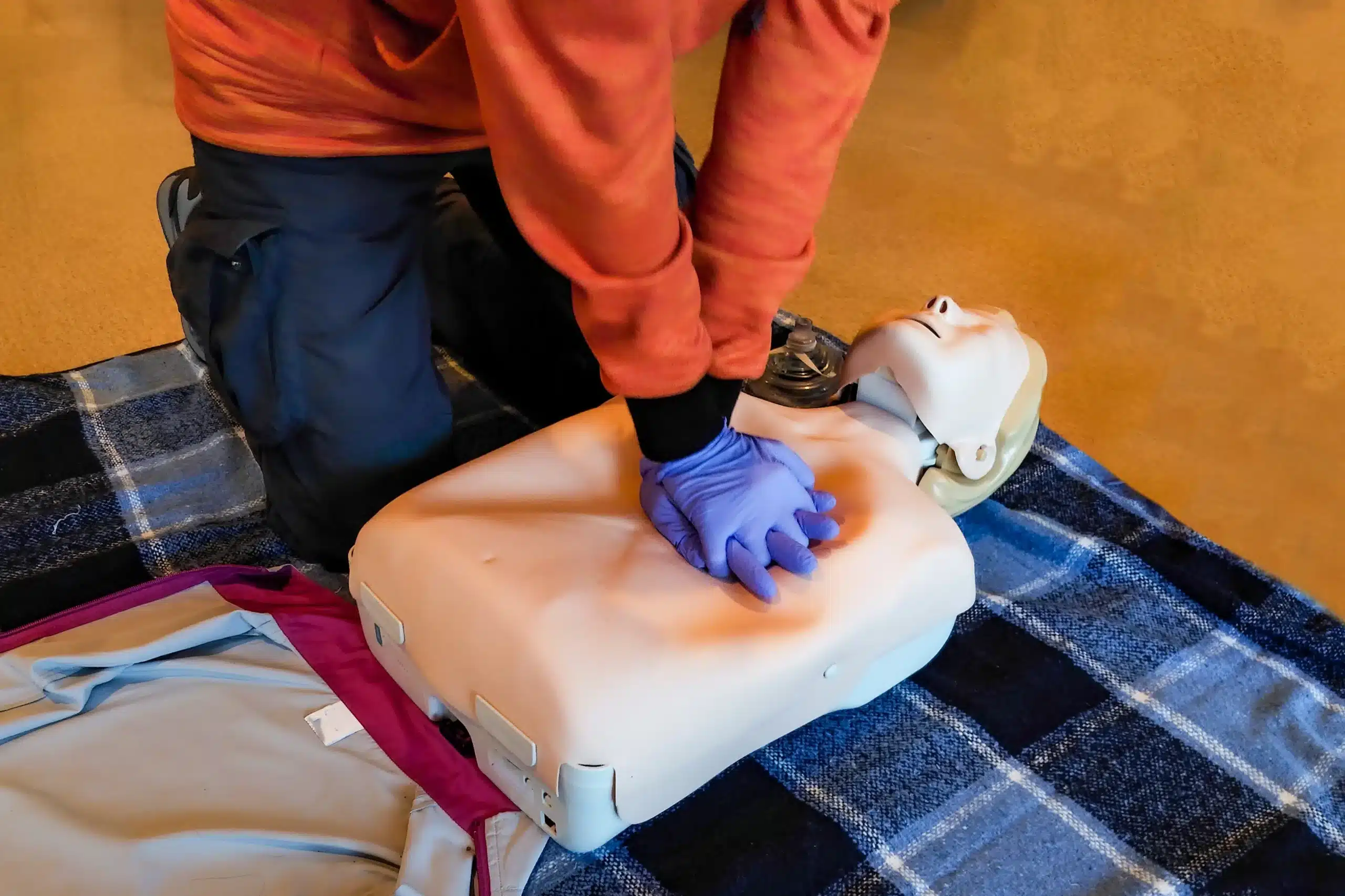Knowing CPR can transform you from a bystander to a life-saver. It’s a skill that empowers you to act quickly and confidently during medical emergencies, potentially making a profound impact on someone’s life. This guide will walk you through the process of obtaining CPR certification, from finding “CPR certification near me” to understanding the different course options and choosing the right one for you. We’ll explore the various types of CPR training, the benefits they offer, and the costs involved. We’ll also discuss the renewal process and how to maintain your certification to ensure you’re always prepared. Let’s dive into the world of CPR certification and discover how you can become an empowered first responder.
Key Takeaways
- CPR certification equips you to handle emergencies: Knowing how to respond effectively in a crisis can make all the difference. Explore CPR courses, from basic life support to advanced certifications like ACLS and PALS, to find the right fit for you.
- Finding the right CPR course requires research: Think about your individual needs, compare different course providers, and factor in any employer requirements before choosing a class. Look for group discounts or promotions to make training more affordable.
- Staying current with your CPR certification is essential: Regularly renew your certification and pursue continuing education opportunities to maintain your skills and stay up-to-date with the latest guidelines. Consistent practice ensures you’re always prepared to act quickly and confidently.
What is CPR Certification?
CPR certification gives you the skills to respond to medical emergencies where someone’s breathing or heartbeat has stopped. It’s a life-saving technique involving chest compressions and rescue breaths, and learning it can give you the confidence to act quickly and potentially save a life. CPR classes cover essential techniques and best practices for various situations. You’ll learn how to assess the scene, perform CPR on adults, children, and infants, and how to use an AED. The certification process typically includes a written exam and a practical skills test, where you’ll demonstrate your CPR technique on a manikin. This hands-on training ensures you’re prepared to respond effectively under pressure. CPR certification isn’t just for healthcare professionals; it’s valuable for anyone, including parents, teachers, and childcare providers. Consider getting CPR certified – it empowers you to make a difference in critical situations.
Why is CPR Certification Important?
CPR certification equips you with life-saving skills, empowering you to respond effectively during emergencies. It’s about more than just checking a box; it’s about having the confidence to act when every second counts. Think of it as a vital skill, much like knowing how to change a tire—practical knowledge you hope you never need, but are immensely grateful to have when the situation arises.
CPR and first aid are fundamental skills that can truly make a difference in life-or-death situations, according to Grace CPR Compliance. Consider that over 500,000 cardiac arrests occur annually, as highlighted by the Red Cross. Learning CPR significantly increases the chances of survival for someone experiencing cardiac arrest. Your quick action can maintain crucial blood flow to the brain and other vital organs until professional medical help arrives, dramatically improving outcomes.
Beyond the immediate impact, CPR certification offers a sense of preparedness and empowerment. Knowing you possess these skills can instill confidence and reduce feelings of helplessness during emergencies. CPR Classes emphasizes that CPR certification is a vital life-saving skill everyone should consider learning. It’s a proactive step towards safeguarding yourself, your loved ones, and your community. By becoming CPR certified, you join a network of individuals prepared to make a difference when it matters most. You become an active participant in your community’s safety net, ready to assist in times of crisis.
Types of CPR Certification Courses
Knowing which CPR certification is right for you can feel overwhelming. This section breaks down the most common types of CPR training, including BLS, ACLS, and PALS. Understanding the differences will help you choose the best course for your specific needs.
BLS (Basic Life Support)
Basic Life Support (BLS) provides the foundational skills needed to respond to life-threatening emergencies. It’s designed for healthcare providers, first responders, and anyone in a field where they might need to perform CPR. BLS certification covers core techniques like chest compressions, rescue breaths, and using an AED. You’ll also learn how to recognize the signs of someone having a heart attack or stroke. BLS courses often include training on how to relieve choking in adults, children, and infants.
ACLS (Advanced Cardiac Life Support)
Advanced Cardiac Life Support (ACLS) picks up where BLS leaves off. It’s a more advanced course designed for healthcare professionals who are likely to lead or participate in emergency cardiac care. ACLS training covers a broader range of interventions, including administering medications, managing airways, and understanding electrocardiograms (ECGs). This certification is essential for doctors, nurses, paramedics, and other professionals working in critical care settings.
PALS (Pediatric Advanced Life Support)
Pediatric Advanced Life Support (PALS) focuses specifically on providing emergency care for infants and children. This course teaches healthcare providers how to quickly assess and address pediatric emergencies, including respiratory distress and cardiac arrest. PALS certification covers specialized techniques for managing a child’s airway and providing age-appropriate CPR. It’s a crucial certification for pediatricians, pediatric nurses, and other healthcare professionals who regularly work with children.
Find CPR Certification Near You
Finding the right CPR class shouldn’t be a struggle. Whether you’re a healthcare professional, a concerned parent, or simply someone who wants to be prepared for emergencies, there are several easy ways to find CPR certification near you.
Online Search
A quick online search is often the fastest way to locate CPR classes. The American Red Cross, for example, has a user-friendly website that lets you search for classes by zip code and filter by course type. You can find everything from adult and child CPR to first aid and AED training. Many other organizations, including the American Heart Association and Safety Training Seminars, also offer online class finders. Our CPR and First Aid classes are easy to find online.
Local Healthcare Facilities
Hospitals, clinics, and other healthcare facilities frequently offer CPR and first aid training. These courses are often geared towards healthcare providers and cover advanced life support techniques like ACLS and PALS. However, many also offer basic CPR and first aid classes open to the public. Check with your local hospitals or medical centers to see what courses they have available. Safety Training Seminars offers these advanced certifications.
Community Centers & Fire Departments
Your local community center or fire department can also be a great resource for finding CPR certification. Many fire departments offer regular CPR training as part of their community outreach programs. Community centers often host classes taught by certified instructors from organizations like the American Heart Association. These classes are typically more affordable than those offered by private companies and provide a convenient way to learn this essential life skill. Contact your local community center or fire department for information on upcoming CPR training sessions. Our group discounts make it easy and affordable for everyone to get certified.
Top CPR Certification Providers
Choosing the right CPR certification provider is a crucial step. Here are some well-known and respected organizations offering CPR training:
American Heart Association
The American Heart Association (AHA) is a leading name in CPR training and research. They offer a wide range of courses, from basic CPR for the community to advanced life support training for healthcare professionals. AHA certification is highly regarded and often a requirement for many healthcare jobs. For those in or near Palo Alto, Safety Training Seminars offers convenient AHA-certified BLS, ACLS, and PALS courses. You can also explore other course offerings on the AHA website.
American Red Cross
The American Red Cross is another trusted source for CPR and first aid training. They offer classes suitable for various needs, from workplace safety to personal preparedness. Their focus on community-based training makes them accessible to a broad audience. Find a course near you on the Red Cross website.
National Safety Council
The National Safety Council (NSC) focuses on safety training across various industries. Their CPR and first aid programs often align with OSHA standards, making them a good choice for workplace compliance. They offer both in-person and online options, providing flexibility for different learning styles.
Safety Training Seminars
Safety Training Seminars offers comprehensive CPR and first aid training, including AHA-certified courses. They focus on providing high-quality instruction at affordable prices, a practical choice for individuals and groups. They also offer discounts for group classes, which can be a great option for businesses or community organizations. If you’re in the Palo Alto area, they are a convenient local option with a low-price guarantee.
Local Hospitals & Medical Centers
Many local hospitals and medical centers offer CPR certification courses to the public. These courses are often taught by experienced healthcare professionals and can provide a valuable real-world perspective. Check with hospitals in your area to see what courses they offer. This can be a convenient and reputable option for local certification.
CPR Course Formats & Duration
CPR courses come in a few different formats, each designed for various learning styles and schedules. Let’s explore the most common options: in-person, online, and blended learning.
In-Person Classes
In-person CPR classes offer hands-on training, crucial for mastering CPR skills. In-person training lets you practice techniques with a certified instructor, ask questions, and get immediate feedback. This format is essential for developing the muscle memory and confidence to respond effectively in emergencies. The American Red Cross highlights the importance of CPR training, citing over 500,000 cardiac arrests yearly. Their classes, and those offered by Safety Training Seminars, meet OSHA requirements, ensuring comprehensive training. In-person classes typically run a few hours, depending on the course and certification level.
Online Courses
Online CPR courses offer flexibility for busy schedules or limited access to in-person training. These self-paced courses let you learn CPR and first aid basics from home. While convenient, online-only CPR courses do not offer OSHA certification. The CDC advises that performing CPR in an emergency is better than inaction. However, skills learned in online courses can decline over time, so regular practice and supplemental hands-on training are ideal.
Blended Learning
Blended learning combines online convenience with in-person instruction. This format usually involves a self-paced online module and an in-person skills session. Blended learning lets you learn CPR theory at your own pace while still getting hands-on training. This approach offers a well-rounded learning experience for diverse learning preferences and schedules. You can find blended learning CPR courses through various providers, including the American Red Cross.
CPR Certification Costs
Getting CPR certified is an investment in your skills and the well-being of your community. Understanding what goes into CPR course fees can help you find training that fits your budget.
Factors Affecting Price
Several things can impact how much a CPR certification course costs. The type of certification you need plays a big role. For example, a basic CPR course will typically be less expensive than more advanced certifications like ACLS (Advanced Cardiovascular Life Support) or PALS (Pediatric Advanced Life Support). As CPR Classes explains in their article on “How To Prepare For A CPR Certification Exam,” the level of certification directly correlates with the cost. The course format also matters. In-person classes often include equipment fees and instructor time, while online courses may have lower overhead. Finally, your location can influence pricing, as costs can differ between training providers and regions. Don’t let cost be a barrier. Many organizations, like MyCPR Now, offer affordable options, as highlighted in their article “The Top CPR Certification Myths Debunked.” At Safety Training Seminars, we’re committed to offering competitive prices with our low-price guarantee.
Group Discounts & Promotions
If you’re training with a group, look for discounts. Many CPR training providers offer reduced rates for group bookings, making it more cost-effective to certify your team, class, or organization. Safety Training Seminars offers discounts for group bookings. You can also find promotions or community programs that offer free or low-cost CPR training. MyCPR Now’s blog post, “Creating a Community of Lifesavers: Promoting CPR Training,” suggests checking local community centers, fire departments, or healthcare facilities for these opportunities. These programs aim to make CPR training accessible to everyone, regardless of budget. Explore these options to find affordable training opportunities in your area.
Choose the Right CPR Course
Picking the right CPR course is a big decision. It’s not one-size-fits-all, so consider your specific needs and do a little research before committing.
Assess Your Needs
First things first: why do you need CPR certification? Are you a healthcare professional, a childcare provider, or someone who wants to be prepared for emergencies? Understanding your goals will help you choose the right course level. For example, healthcare providers often require ACLS certification, while BLS certification might be appropriate for other professions. Think about the situations you’re most likely to encounter and choose a course that aligns with those needs.
Compare Providers
Once you know what type of certification you need, compare providers. Look at factors like cost, schedule, and the overall learning experience. Some providers offer group discounts, a great option if you’re training with friends or colleagues. Also, check if the provider offers additional resources, like online materials or refresher courses. These extras can be really helpful for reinforcing your skills and staying up-to-date. Reading online reviews can also give you valuable insights into the quality of instruction and customer service. Safety Training Seminars is committed to providing high-quality training at competitive prices. Check out our low price guarantee.
Employer Requirements
Before you sign up for any CPR course, double-check your employer’s requirements and any relevant state regulations. Some employers might require certification from specific organizations like the American Heart Association, while others accept certifications from a broader range of providers. Also, be aware that online-only CPR certifications may not meet all workplace standards, so make sure the course format aligns with your professional needs. Verifying these details upfront will save you time and potential headaches. Our courses offer American Heart Association certification through the RQI program.
Benefits of CPR Certification
Getting CPR certified isn’t just about acquiring a skill; it’s about gaining confidence and opening doors to new opportunities. Whether you’re aiming to advance your career, meet workplace requirements, or simply feel prepared to handle emergencies, CPR certification offers several valuable benefits.
Meet Workplace Standards
Many professions require CPR certification as a condition of employment. This is especially true in healthcare, education, and childcare, where employees frequently interact with vulnerable populations. CPR training ensures you meet OSHA (Occupational Safety and Health Administration) requirements, demonstrating your commitment to workplace safety and your ability to respond effectively in critical situations. For businesses, having CPR-certified employees not only fulfills legal obligations but also creates a safer, more secure environment. At Palo Alto CPR Classes, we offer a range of courses designed to meet these standards, including BLS certification for healthcare providers. We also offer discounted group rates for businesses looking to certify multiple employees.
Enhance Job Prospects
In a competitive job market, CPR certification can give you an edge. Listing this qualification on your resume signals to potential employers that you’re proactive, responsible, and equipped to handle pressure. It can be particularly helpful for roles involving patient care, childcare, or community service. Earning your CPR certification demonstrates a commitment to lifelong learning and a willingness to go the extra mile—qualities employers value. Explore our course options to find the right fit for your career goals. Our convenient location serves Palo Alto, Redwood City, and Menlo Park.
Build Confidence in Emergencies
Perhaps the most significant benefit of CPR certification is the confidence it instills. Knowing you possess the skills to potentially save a life empowers you to act decisively in emergencies. While maintaining a current certification is ideal, even having some training can make a difference. The CDC recommends performing CPR in an emergency—even if your certification has lapsed—rather than standing by helplessly. Regularly renewing your certification through programs like our RQI classes ensures your skills remain sharp and you stay up-to-date with the latest guidelines. This preparedness benefits those around you and provides you with invaluable peace of mind. Our low price guarantee makes staying current on your certification accessible and affordable.
Maintain Your CPR Certification
Once you’ve earned your CPR certification, staying current is key. Knowing the renewal process and committing to ongoing education ensures you’re always prepared to help in an emergency.
Renewal Process
CPR certifications, especially those from organizations like the American Heart Association, are typically valid for two years. Check your card for the exact expiration date. As that date approaches, you’ll need to take a renewal course to maintain your credentials. These renewal or refresher courses are often shorter than the initial certification class, covering essential skills and any updates to guidelines. It’s a smart move to sign up for your renewal a few weeks before your certification expires to avoid any lapse in coverage. If your job requires CPR certification, keeping it current is essential for staying compliant with workplace standards. Palo Alto CPR Classes offers convenient renewal courses to help you stay certified.
Continuing Education
Even with a valid certification, regular practice and continuing education are crucial. Studies show that CPR skills can decline within months of training. Hands-on practice and refreshers can help you retain those vital life-saving skills. Plus, CPR guidelines are occasionally updated to reflect the latest medical research and best practices. Your CPR training course will cover these updates, but staying informed about any changes between renewals is always a good idea. Resources like the American Heart Association website offer valuable information on the latest guidelines and best practices. Consider adding practice sessions to your routine or attending supplemental workshops to keep your skills sharp and your knowledge up-to-date.
Related Articles
- Why CPR is Crucial in Healthcare
- CPR Certification in Palo Alto: Your Guide
- CPR Courses in Redwood City: Complete Guide
- Find CPR Courses Near Me: Your Guide to Getting Certified
- BLS Certification Near Me: Find Local Classes
Frequently Asked Questions
What if I’m nervous about performing CPR in a real emergency? It’s completely normal to feel apprehensive about using CPR in a real-life situation. That’s why proper training is so important. High-quality CPR courses emphasize hands-on practice and realistic scenarios to build your confidence and prepare you to respond effectively under pressure. Remember, any attempt at CPR is better than none.
How long does it take to get CPR certified? CPR certification courses vary in length, but most basic CPR classes can be completed in a single day, typically lasting a few hours. More advanced certifications, such as ACLS and PALS, may require additional time. Online components of blended learning courses offer flexibility, allowing you to learn the material at your own pace before attending an in-person skills session.
Is online CPR certification enough, or do I need in-person training? While online CPR courses offer a convenient way to learn the basics, they typically do not meet OSHA requirements for workplace certification. Hands-on practice with a certified instructor is crucial for developing the muscle memory and confidence to perform CPR effectively. Blended learning courses combine online learning with in-person skills sessions, offering a flexible yet comprehensive approach.
How much does CPR certification cost? The cost of CPR certification varies depending on the course type, format, and provider. Basic CPR courses are generally less expensive than advanced certifications like ACLS or PALS. Many providers offer group discounts, which can be a cost-effective option for businesses or community organizations. Look for providers with transparent pricing and consider factors like course content and instructor experience when making your decision.
How often do I need to renew my CPR certification? Most CPR certifications are valid for two years. To maintain your certification, you’ll need to take a recertification course before your current certification expires. Staying current ensures your skills are up-to-date and you’re prepared to respond effectively in an emergency. Many providers offer convenient renewal courses, often shorter than the initial certification class.
